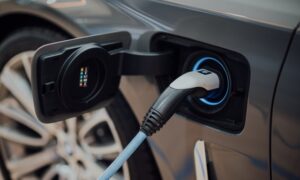Making the conversion to an electric vehicle can be challenging since there are so many models to pick from and new vocabulary to learn, even if there has never been a better moment to do so. Additionally, if you’ve never driven an electric vehicle, you certainly have a lot of questions, one of which is: How long does it take an electric vehicle to charge?
Although there isn’t a straightforward response to this topic, understanding the variables can help you come up with a solution. It’s critical to comprehend the differences between driving an electric vehicle and a gas-powered vehicle. When the gasoline gauge indicates that the car is running low on fuel, most gas vehicle drivers top up their tanks. For EVs, the majority of owners top off the battery whenever they park rather than allowing it to discharge entirely before the home charging point.
With a charging station close by, all that valuable parking time can get used to keeping the battery charged and ready to go, whether at home overnight, at work, or grocery store. In other words, even while in some circumstances charging an EV takes longer than filling up with gas, you probably won’t notice while you’re off taking care of more vital things.
Let’s look at what influences charging time to help you find a trustworthy estimate based on your circumstances.
What affects how long it takes an electric car to charge?
1. Battery size
The size of a vehicle’s battery dictates how much energy it can retain, just as the size of a gasoline car’s tank. The greater the battery, expressed in kilowatt-hours (kWh), the electric equivalent of a litre or gallon, the longer it will take to charge. With battery capacities of 90 kWh and 75 kWh, respectively, and higher power requirements, some larger vehicles, like the Tesla Model S and Porsche Taycan, will require more time to charge than smaller vehicles.
2. Charged status (empty vs. full)
State of charge (SoC) describes how much energy your EV can utilise between “full” and “empty,” much like the gasoline indicator on a car. EVs utilise lithium-ion batteries, which deteriorate more quickly when discharged to zero and then completely charged, similar to mobile phones and laptops.
To combat this, automakers installed devices to stop batteries from discharging below or charging over certain thresholds—typically above 80% and below 20%. It could therefore take as long as or more than the original charge to charge from 80 to 100 percent.
3. The vehicle’s ability to charge
Larger batteries can store more energy, but they may take longer to charge because some cars require a higher input of power than others. For instance, the smaller Peugeot e-208 only supports 50 kW of fast charging, whereas the larger Tesla Model 3 has a fast charging capacity of 250 kW. This represents a significant difference in charging times. Therefore, a tiny battery does not always equate to a car charging more quickly. Even though the battery in the Tesla stated above may be far larger than the one in the Peugeot, fast charging will allow it to charge more quickly.
4. Environmental factors
How quickly you can charge an EV depends on the surrounding environment. Temperatures between 20 and 25 °C (68 and 77 °F) are ideal for battery performance. When utilising a Level 3 charging station, it could take a little bit longer to charge if the temperature goes too low or high. This is due to the fact that when a vehicle’s battery management system (BMS) detects greater or lower temperatures, it decreases power to safeguard the battery.
5. The station’s capability for charging
Aside from the factors mentioned above, one of the major factors affecting charging time is the charging station’s capacity. There are various charging levels; generally, the greater the level, the quicker it can charge your vehicle. Let’s examine each to see how they contrast.
How far can an electric vehicle travel?
How far can I drive my new car? is another query that many prospective EV owners have before making a purchase. Or perhaps the most accurate phrase is, “Am I going to run out of charge on a long-distance trip?”The image of the electric car is clear, but the city is hazy, indicating that it is moving quickly through the city at night.
Many prospective EV drivers suffered from range anxiety early in the electric mobility revolution. And with good reason: The Nissan LEAF, the most popular EV at the time, had a maximum range of just 175 kilometers (109 miles). At 313 km (194 miles), the median range of EVs today is over twice as large as it was, and many EVs have a range of more than 500 km (300 miles), which is more than enough for even lengthier daily commutes in cities.
Range anxiety is disappearing as a result of this increase in range and the dramatically expanded infrastructure for charging.
Whatever way you look at it, the time required to charge a device will never be the same as the time required to fill a tank with fuel. Driving an electric car charging point differs from driving a gas-powered automobile in a variety of ways.











































